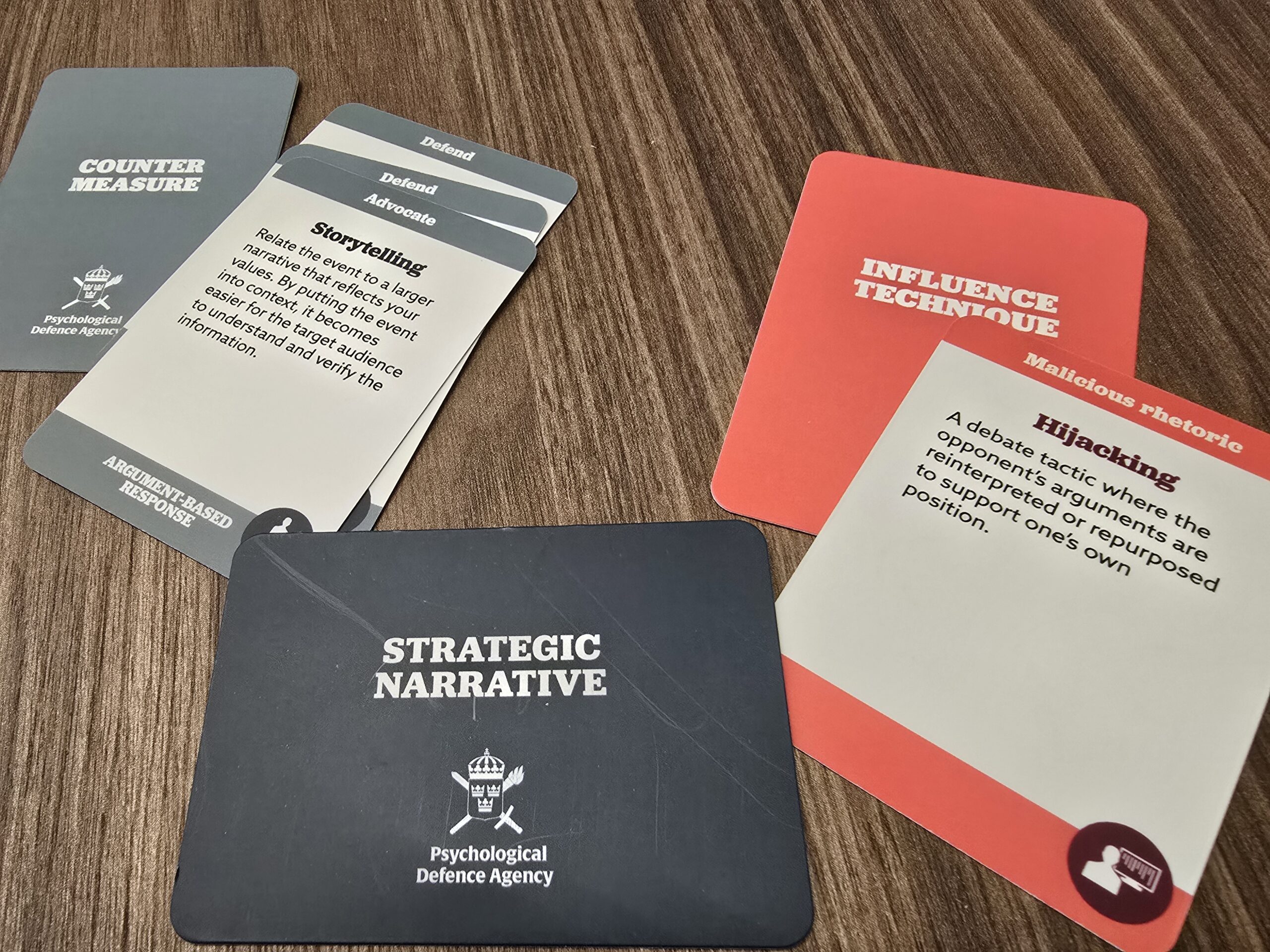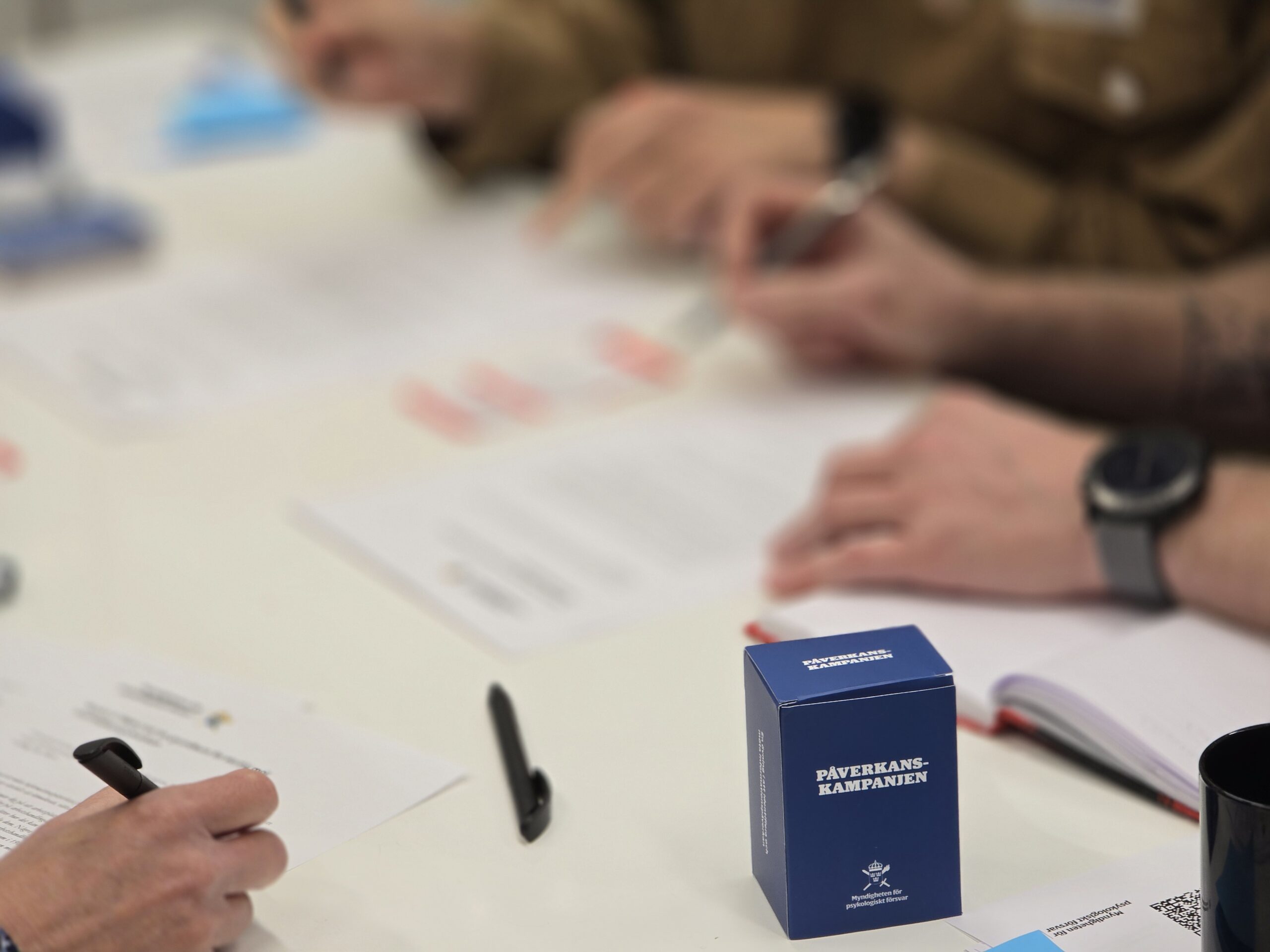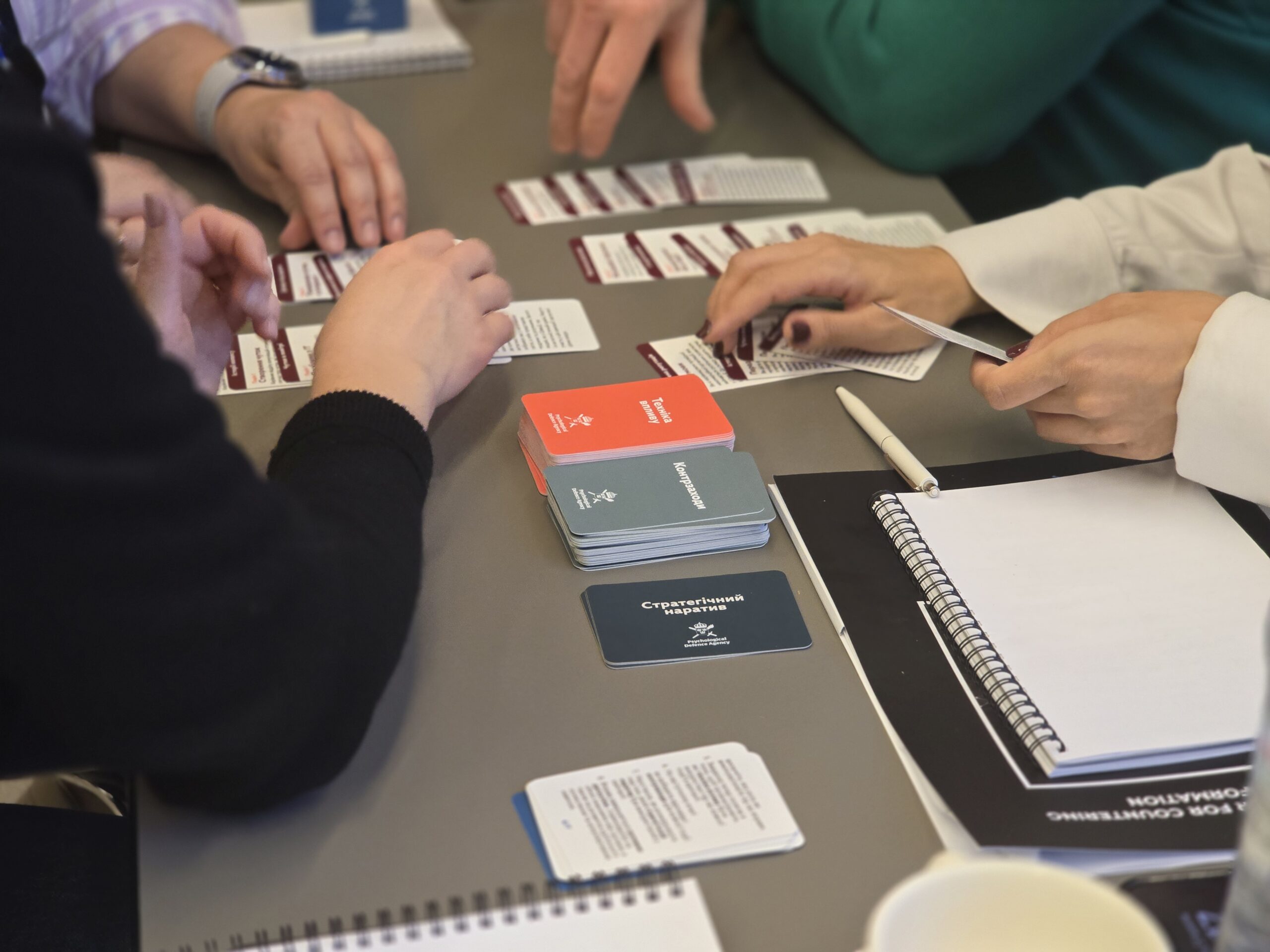
What if we could enhance teaching, training and exercises in the practice of mitigating foreign influence and malign information, through novel training materials? That was the starting question that has brought me on a journey over the past year, form our innovation labs at RISE – Research Institutes of Sweden, in Göteborg, to training sessions with the Swedish Psychological Defence Agency, and thereafter to training sessions with the Center for Countering Desinformation in Ukraine. This is a story about what started out as a fairly straightforward concept, but over the year evolved into a powerful resource for understanding, analyzing, and countering influence campaigns—both in Sweden and beyond.
The journey of the deck of cards is also a story of international collaborations, of the importance of pedagogy and design, and the way a simple idea can grow to have profound impact. Initially developed at RISE, the Research Institutes of Sweden, the project aimed to create an accessible and practical tool to deepen participants’ understanding of mitigating foreign influence and malign information. For my part, it felt a bit like coming home, as I in the past have designed numerous exercises and trainings in various educational contexts, form the Swedish Armed Forces to primary schools and even the Swedish National Parliament. I havent designed new materials for quite some time, so it felt great to bring together competencies from the past, with my current work,
The project started out by carrying out a feasibility study to map the context, pedagogical needs, and technical conditions. The first prototype was tested in smaller educational settings in RISE and at the Agency for Psychological Defence, where feedback from instructors and participants shaped its further refinement. What started as a basic analytical and discussion tool evolved into a more sophisticated design, where the deck of cards not only could be used for introductory teaching and training, but also in more complex and dynamic red teaming exercises.

The deck itself is structured around four main categories of cards. Campaign cards describe fictional yet realistic scenarios in which antagonistic actors use various influence techniques, such as disinformation, sock puppets, botnets and hacking to target a specific actor or audience, or to undermine an organization. The players use Influence technique cards to identify and explain the methods employed in these campaigns. Countermeasure cards offer strategies to respond to these challenges, from fact-checking to transparent communication and swift action. Finally, Strategic narrative cards further illuminate how particular storylines can be amplified or countered depending on how they are framed and the values they aim to invoke. A typical exercise involves dividing participants into small groups of two to four people. Each group receives a scenario to analyze and discuss. For instance, they might be tasked with identifying the techniques used in a campaign where false experts disseminate disinformation about a public institution, then determining suitable countermeasures. The process is both structured and open-ended. Groups are encouraged to document and justify their choices while also thinking creatively and debating multiple perspectives. One of the deck’s most valued aspects is its ability to provide not only theoretical knowledge but also hands-on practice in decision-making, collaboration, and communication under pressure.

What makes the card deck even more interesting is its versatility. Beyond the standard exercises, where groups analyze and discuss campaigns, a dual-sided approach has been developed to deepen its impact. In this format, participants are split into two teams. One team playing the role of the antagonist, the other acting as the defender. The antagonist team uses influence technique and strategic narrative cards to design an influence campaign, while the defender team works to anticipate and counter their moves with countermeasure cards. This dynamic approach offers participants a more profound understanding of both offensive and defensive aspects of information influence, creating an engaging and interactive experience.
As the card deck gained traction during the year as a valuable tool in Swedish training environments, thoughts turned to further development. In the autumn of 2024, the project took an unexpected yet significant turn. During collaborative work in Kyiv between the Swedish Agency for Psychological Defence, RISE and CCD – Ukraines Center for Countering Disinformation, the idea emerged to adapt the deck for use in Ukraine, a country at the forefront of countering information influence, but also with an urgent need to further teach and train throughout the country. Through the partnership with the Center for Countering Disinformation, we where able to rapidly translate and print the deck into both Ukrainian and English. In October 2024, the Ukrainian version of the deck was first introduced during a training session that I carried out in Lviv. Participants, including educators, analysts, and members of special forces, experienced firsthand how the cards could be used to analyze and counter foreign influence and malign information. The response was overwhelmingly positive. It became clear that the deck was not just an educational tool but also a bridge between nations and organizations. During the training we also had participants from the UK, testing the deck of cards in English. During a double sided training we also explored a bi-lingual training between participants from the UK and Ukraine with very good results.

In hindsight, the experiences I have had in Ukraine have profoundly influenced how I am thinking of evolving the deck of cards, both for further use in Sweden and abroad. The collaboration introduced new ideas and perspectives that I hope to integrate into the material over the coming year, making the card deck an example of how educational innovations can adapt and improve through practical application and international cooperation.
Leading the project has been an immensely rewarding and educational journey. From the first tests in Sweden to the training sessions in Ukraine, the card deck has proven to be more than just a tool. It has also become a platform for dialogue, a means of raising awareness about complex issues, and a reminder that even small ideas can make a significant difference. Each time I see the deck in use, whether in a Swedish classroom or during workshops and trainings in Ukraine, I feel deep gratitude for having been part of this project. The deck of cards is not just a´tool for teaching and training. It has also become part of an exploratory journey into an expanding area of knowledge in how to mitigate foreign influence and malign information. And for me, its also a reminder that we build digital resilience through knowledge, shared experiences and collaboration.
The teaching and training card game “The Influence Campaign” is a part of material from the Swedish Psychological Defence Agency.
Leave a Reply